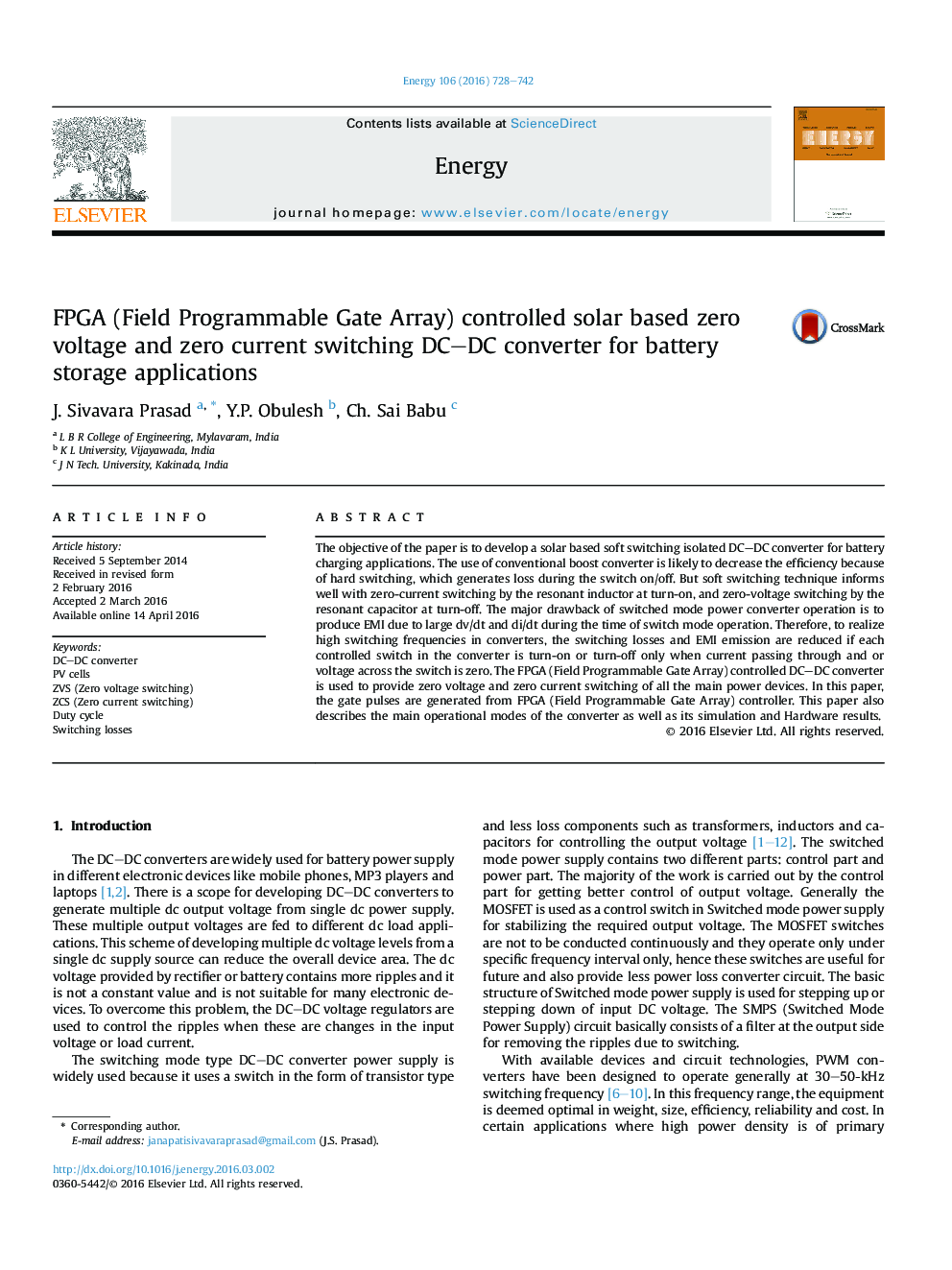| Article ID | Journal | Published Year | Pages | File Type |
|---|---|---|---|---|
| 1730996 | Energy | 2016 | 15 Pages |
•This paper consists of the design, development, and verification of a two-stage converter for PV applications.•The first stage consists of soft-switching interleaved DC–AC converter and it converts PV panel input to an AC voltage.•The second stage is a rectifier which provides battery connectivity for the panel.•The proposed DC–DC converter will provide isolation between PV panel and load.•The gate pulses are developed from FPGA controller and this scheme provides low switching losses and high efficiency.
The objective of the paper is to develop a solar based soft switching isolated DC–DC converter for battery charging applications. The use of conventional boost converter is likely to decrease the efficiency because of hard switching, which generates loss during the switch on/off. But soft switching technique informs well with zero-current switching by the resonant inductor at turn-on, and zero-voltage switching by the resonant capacitor at turn-off. The major drawback of switched mode power converter operation is to produce EMI due to large dv/dt and di/dt during the time of switch mode operation. Therefore, to realize high switching frequencies in converters, the switching losses and EMI emission are reduced if each controlled switch in the converter is turn-on or turn-off only when current passing through and or voltage across the switch is zero. The FPGA (Field Programmable Gate Array) controlled DC–DC converter is used to provide zero voltage and zero current switching of all the main power devices. In this paper, the gate pulses are generated from FPGA (Field Programmable Gate Array) controller. This paper also describes the main operational modes of the converter as well as its simulation and Hardware results.
